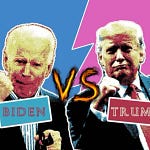In previous episodes of this podcast, we have talked about the IoTeX blockchain, providing one in-depth example of a total blockchain ecosystem and explaining its potential benefits to future users. Later, we discussed characteristics of blockchain ecosystems, including our episode on core blockchain protocols like Bitcoin and Ethereum, and then we covered consensus mechanisms associated with those. After discussing these two primary characteristics (core blockchain protocols and consensus mechanisms), we are ready to delve into characteristic number three – Smart Contracts.
## What is a Smart Contract?
So, what exactly is a smart contract, and where did it come from?
We have Nick Szabo, computer scientist and cryptographer, to thank for this amazing technology. In 1994, he introduced the concept in a paper simply titled "Smart Contracts." Later, in 1996, he expanded on this idea with a new paper, "Smart Contracts: Building Blocks for Digital Markets."
According to Szabo, a smart contract is a "computerized transaction protocol that executes the terms of a contract." The general objectives of smart contract design are to satisfy common contractual conditions such as payment terms, liens, confidentiality, and even enforcement, minimizing exceptions (both malicious and accidental) to reduce the need for trusted intermediaries between parties. This idea is meant to lower fraud losses, arbitration and enforcement costs, and other transaction costs.
These contracts, according to Szabo in a paper published in 1997, are "digital bearer certificates" or tokens that implement standardized rights transferable regardless of the holder's identity. Each kind of contract or denomination of a "coin" corresponds to a digital signature, just like a stock certificate or Federal Reserve Note. This digital signature provides assurance that the certificate is indeed the particular kind of contract, with an associated serial number (or hash) to ensure that the same certificate is not redeemed more than once.
## Comparing Federal Reserve Notes and Smart Contracts
Let's use an example everyone is familiar with: Federal Reserve Notes (FRNs). We'll compare them to smart contracts to get an idea of what's happening here.
### Federal Reserve Notes (FRNs):
- Physical paper currency issued by the Federal Reserve
- A component of "broad money," including deposits shown on banking apps
- Rely on trust in the U.S. Government and Federal Reserve System
- Authenticity verified using security measures like watermarks and security threads
- Transferred by physical exchange during transactions
- Enforced through laws and regulations by legal entities like the FBI
### Smart Contracts:
- Digital tokens created on a blockchain, representing digital currency
- Trust relies on cryptographic algorithms and distributed consensus mechanisms
- Verification done through cryptographic proofs (e.g., mining on Bitcoin or validating on Ethereum)
- Transfers executed automatically when predefined conditions are met
- Self-executing based on code, theoretically not requiring law enforcement
## Types of Smart Contracts
There are many types of smart contracts, just as there are many kinds of contracts in real life. These include:
1. Payment contracts
2. Escrow contracts
3. Governance contracts
4. Multi-signature contracts
5. Smart legal contracts
6. Decentralized Autonomous Organization (DAO) contracts
7. Application logic contracts
8. Supply chain contracts
9. Tokenization contracts
10. Marketplace contracts
11. Airdrop contracts
12. Smart wallet contracts
For your purposes, payment contracts are the most important due to their simplicity, relevance, and foundation for learning.
## Important Considerations
Smart contracts are offered on various platforms, in different languages, and have divergent weaknesses and strengths. It's crucial to do thorough research before interacting with any unknown financial tools in this space. Consider having a smart contract developer audit the contract or search the wallet address to check for associated scams.
*Note: In this text, "hash" was used to refer to serial numbers of FRNs for simplicity. However, transaction IDs between wallet addresses are a better metric for true authentication. These are validated or mined in blocks, and those blocks will have the "hash" associated with that batch of transactions, authorizing that all transactions were valid and not "doubled."*

















#7 Blockchains and Contracts